In Provence, there have recently been some very large acquisitions in the rosé wine industry. The most famous acquisitions are LVMH’s purchase of Château d’Esclans, Château Minuty, Château de Galoupet, Domaine des Grands Esclans, and Domaine du Jas d’Esclans (!) as well as Pernod Ricard’s purchase of Château Sainte Marguerite, but there are many, many more acquisitions that you have been able to read about in previous blog posts.
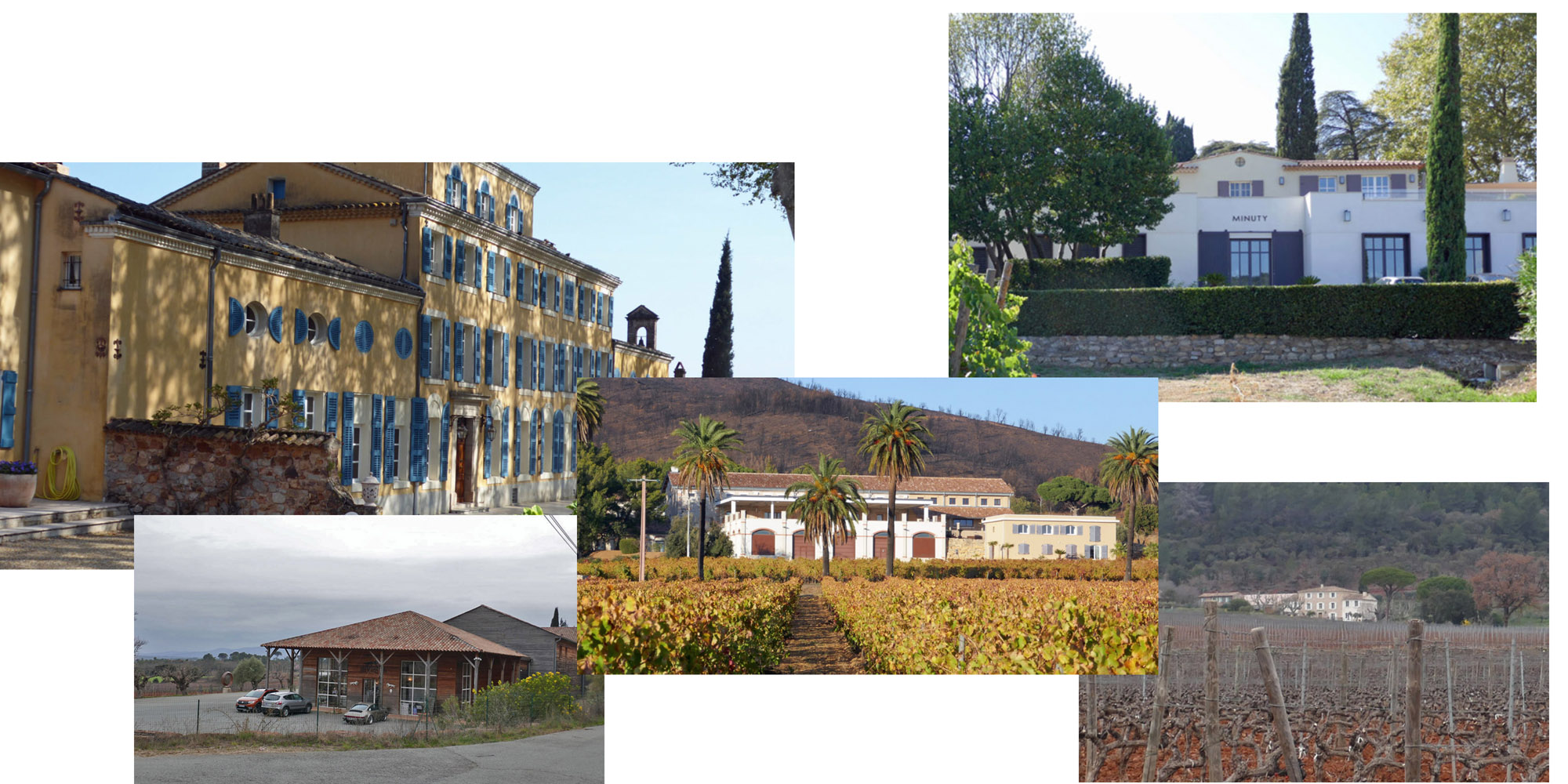
LVMH’s all acquisitions in Provence
But do these acquisitions match what the future of rosé wine looks like? Recently, the Provence Wine Council (CIVP) and FranceAgriMer came out with a compilation of the situation up to the consumption year 2021, i.e., up to and including the 2020 vintage, and I have critically reviewed this report which perhaps paints the situation a bit better.
The share of rosé wine
I can already leave a reassuring message here, still every 10th bottle of still wine opened in the world is a rosé wine. France has a special position here as every third bottle opened is a rosé wine!
Dominant producer countries
France is also by far the largest producer and accounts for 35% of world production, followed by Spain (20%), the USA (10%) and then Italy (9%). These four countries thus account for three quarters of world production! The US is losing volume while Italy is increasing. The USA’s loss is due to the market increasingly wanting dry rosé wines instead of the sweeter Blush/White Zinfandel wines.

Other “new” rosé wine countries that have caught on to the positive rosé wine trend and have had a more than 50% increase in the last 10 years are Chile, New Zealand, Hungary, Romania, and Bulgaria.
Dominant consumption countries
Here, too, France is at the top with a consumption that is a third of world production. But the French do not just drink French rosé wines, the country is also the biggest importer, but then it is cheaper rosé wines for around 0,5€ a bottle excluding taxes. A lot of the wine comes from the world’s largest exporter of rosé wine by volume, i.e., from Spain. That could probably be one of the reasons why the wine farmers in the south of France stopped Spanish lorries in October and where the wine load was then smashed.
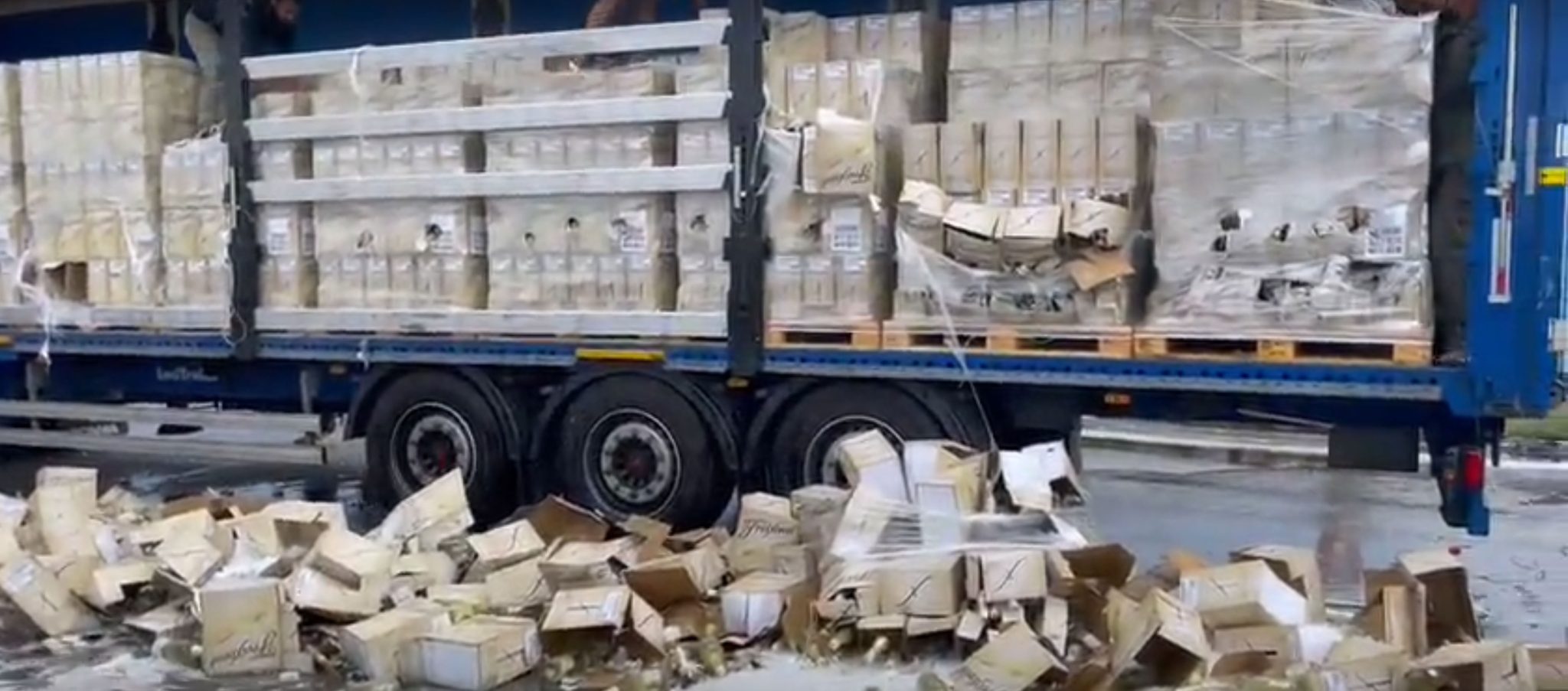
Spanish lorry stopped and where the load of wine is destroyed. Photo: Centrepresse.fr Aveyron
In 2021, Germany moved up to second place in terms of consumption and thus narrowly passed the USA, which had been second for ten years.
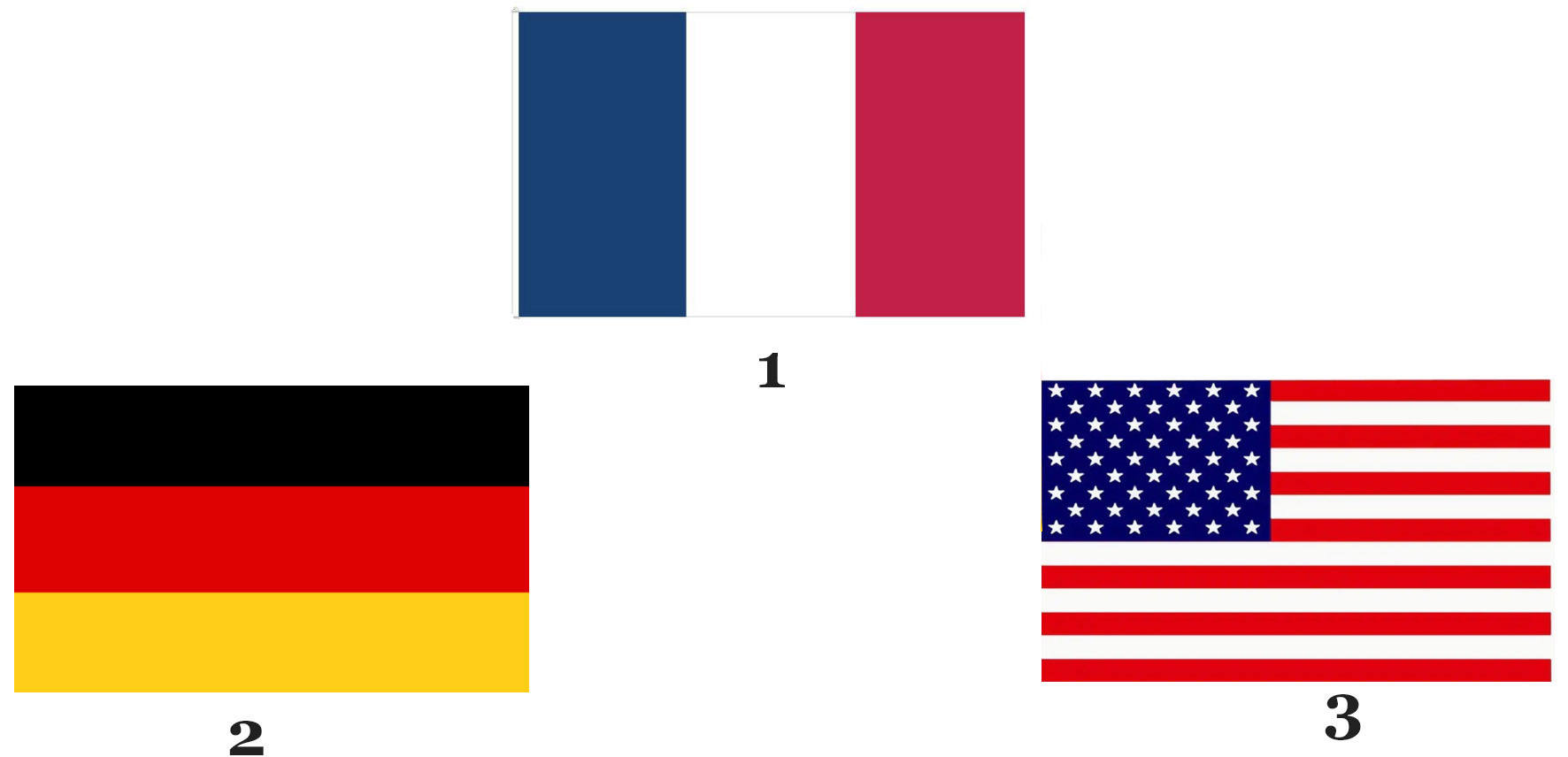
The rosé wine market has had a very bright development for almost 10 years, but the trend was broken in 2020 and 2021. The report states the Covid pandemic as one of the reasons, with closed restaurants and no purchases directly from the wine producers. Another reason is the declining market in the USA for the sweeter Blush/White Zinfandel wines.
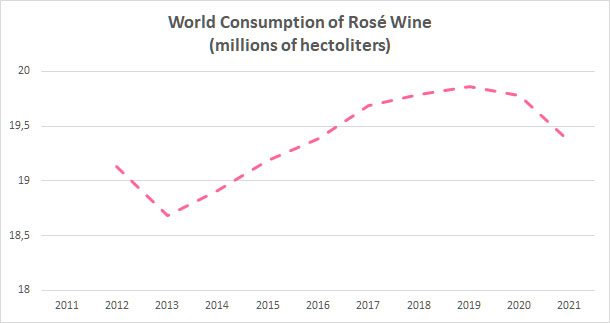
The world consumption of rosé wine
One reason not mentioned in the report is the French wine crisis, where consumption in the country is steadily decreasing, however, rosé wine is not affected as much as the red wine.
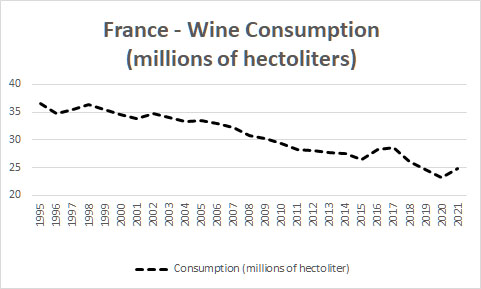
The decreasing French wine consumption
Production versus consumption
The report does not report production and consumption in the same diagram because then it becomes clear that since 2018 there is also a large overproduction of rosé wine, see the diagram where the scale on the right applies to rosé wine and the one on the left applies to all types of wine.
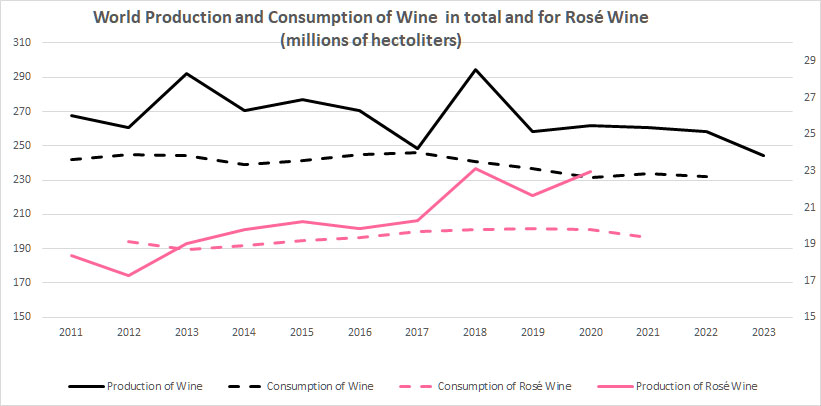
An educated guess is that information like this about the overproduction was behind the Provence Wine Council’s (CIVP) decision in August to reduce the harvest withdrawal for rosé wine in Côtes de Provence by 10% and in Coteaux d’Aix en Provence by as much as 23%. Through the measure, they want to avoid price reductions and build-up of wine stocks and they definitely do not want to end up in the same situation as Bordeaux and others wine regions where vineyards will be uprooted and vast amounts of wine distilled away.
The report states that the overproduction may have been used to build “safety stock” or for “industrial use”, which I interpret as a nicer term for distilling into industrial spirit.
However, building stocks of rosé wine is not so successful today as the large amount of simpler rosé wines are produced to be drunk in the first year. This is clearly seen in France with the department store chains, when the new vintage appears, the old rosé wines are sold away.

Master Class tasting wines – Vintage 2019 down to 2000!
There are many prestige rosé wines that can age comfortably in the cellar, but the volume is negligible. But increased ability to age the Provencal rosé wine is an issue that the Provence Wine Council (CIVP) is pushing hard, for example there was a Master Class on this at the rosé wine fair “Provence Experience 2022” in February this year. If Provence succeeds in this, it will be easier to build stocks and avoid the strong price fluctuations, and of course there will be more interesting quality rosé wines!
The future of rosé wine
The report says that due to Covid and the US market it is difficult to say whether the negative consumption trend in 2020 and 2021 is a serious trend break or not. The future will show this. Regardless of this, rosé wine is a wine type that is here to stay and every 10th wine bottle opened is a rosé wine.
On the other hand, it is a qualified guess that rosé wine will experience the same journey that white and red wines have made when there is now an overproduction, i.e., that the increased competition leads to an increased focus on higher quality wines. It is probably the market for prestige rosé wines that is behind LVMH’s and Pernod Ricard’s investments, and several other investments, in the popular rosé wine.
Sources: OIV, IWSR Wine Intelligence, Provence Wine Council (CIVP) and FranceAgriMer report “Rosé Wines World Tracking”.
Surely you have signed up for the Newsletter so that you receive news from the Provence wine world as well as other interesting wine news? If you have already done so, tell your wine-interested friends!
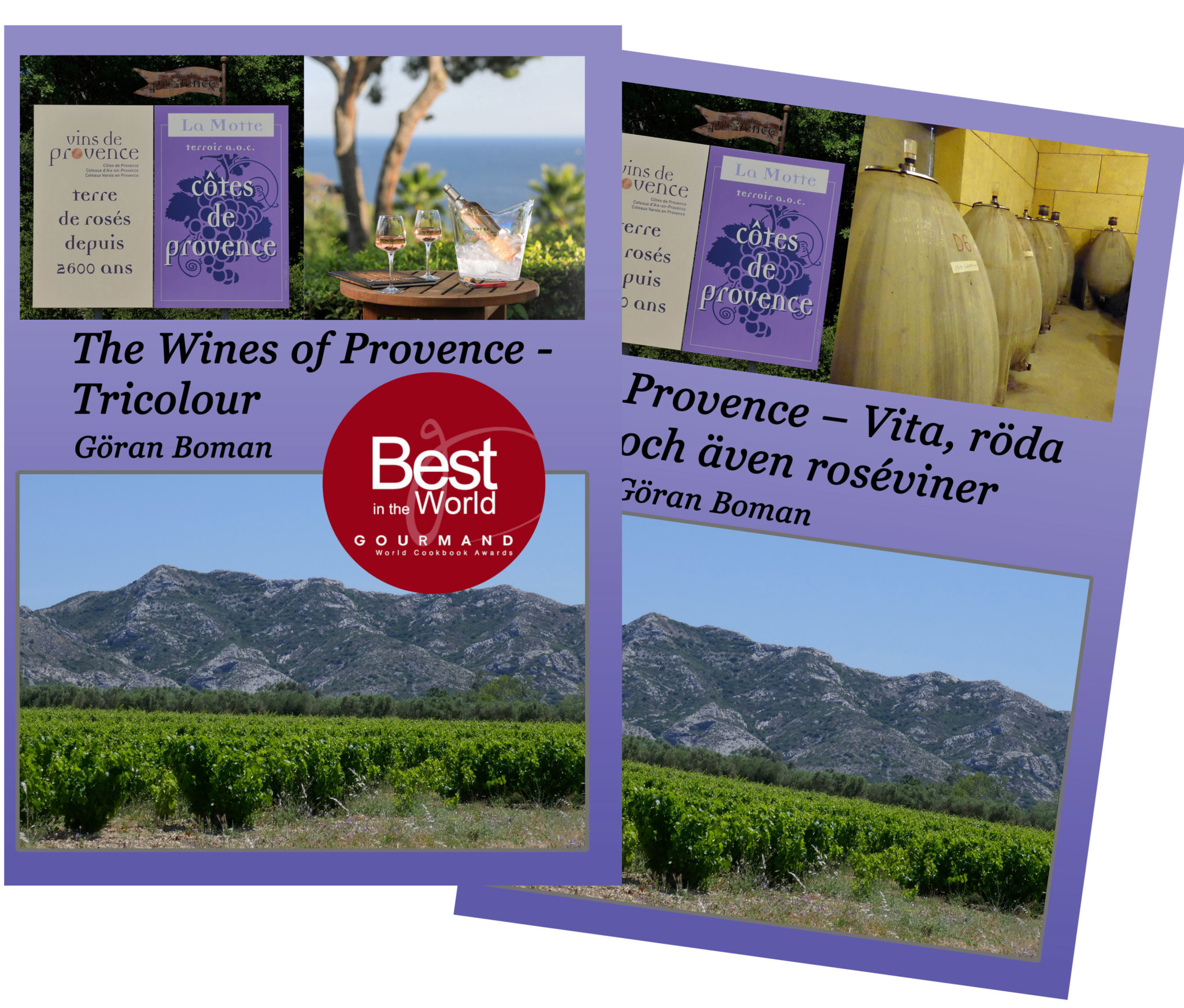
Provence expert Göran Boman, Author of the books “Provence – White, red and also rosé wines” and “The Wines of Provence – Tricolour”.
